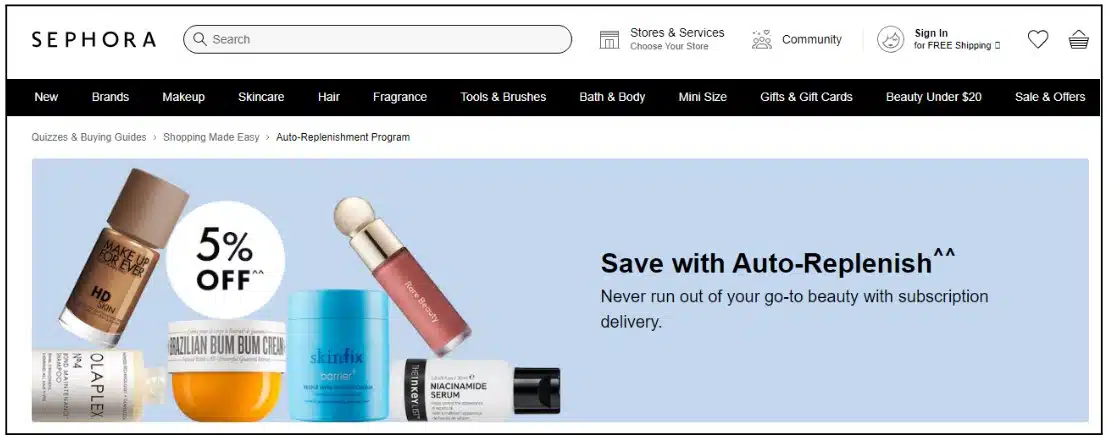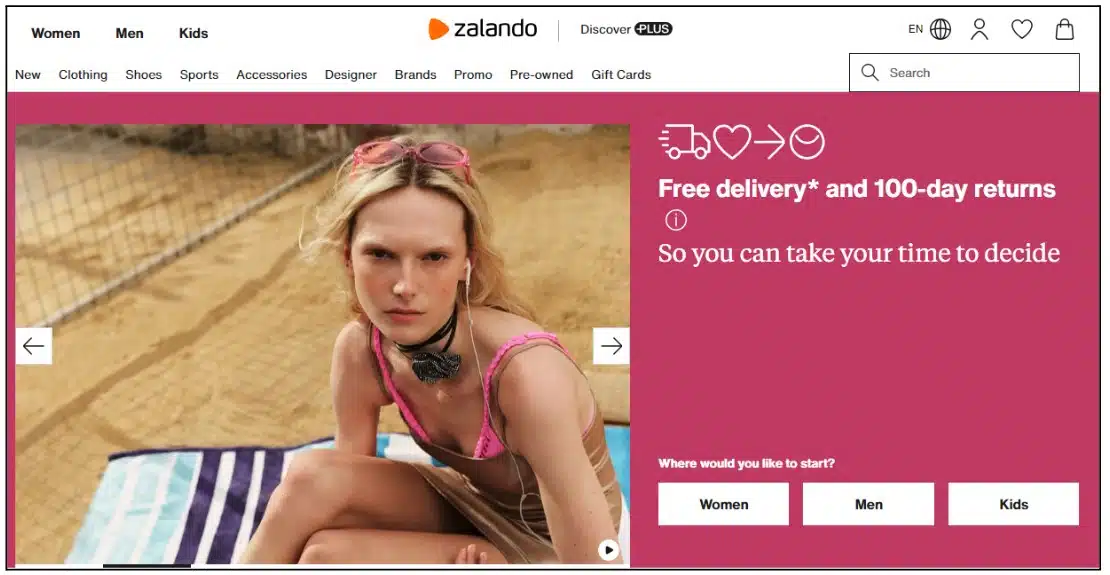10 eCommerce Discounts and How to Use Them to Boost Sales

Brad Owens | May 22, 2024
Reading Time: 5 minutesOffering discounts has become a powerful strategy to attract customers and boost sales. Discount codes, in particular, have gained immense popularity among online shoppers. In this article, we will explore 10 effective ecommerce discounts and how to utilize them to increase your sales. Additionally, we will discuss the benefits of using discount codes and why it’s crucial to use them cautiously to protect your brand’s value.
1. Percentage-Based Discounts
Percentage-based discounts are a classic and straightforward approach to entice customers. Offering a specific percentage off the original price, such as “20% off your purchase,” creates a sense of value and encourages customers to make a purchase. This type of discount is easily understandable and can be applied to individual products or entire orders. According to a study by MarketingProfs, a whopping 57% of US consumers admitted that they wouldn’t have bought the product if they were not offered a coupon code.
Sephora offers 5% discount on some of their subscription products
2. Free Shipping
Free shipping is a highly effective discount strategy that can significantly influence a customer’s decision to purchase. Many online shoppers abandon their carts due to high shipping costs. By offering free shipping, you eliminate this barrier and make your products more appealing. Consider setting a minimum order threshold to qualify for free shipping, which can also encourage customers to spend more. According to a 2023 study by Shippo, about 62% of consumers said they cannot purchase from a retailer that doesn’t offer free shipping.
Zalando offers free delivery and 100-day return
3. Buy One, Get One (BOGO) Deals
BOGO deals, such as “Buy one, get one 50% off” or “Buy two, get one free,” are excellent for boosting sales and encouraging customers to purchase multiple items. These offers create a sense of urgency and value, motivating customers to take advantage of the deal before it expires. BOGO promotions work well for products that are frequently bought in multiples or for complementary items. A survey by RetailMeNot revealed that 67% of consumers made an unplanned purchase solely because they found a coupon or discount.
4. Bundle Discounts
Bundle discounts involve offering a reduced price for a set of related products purchased together. For example, a skincare brand might offer a discounted price for buying a cleanser, toner, and moisturizer as a bundle. This strategy encourages customers to buy multiple products, increasing the average order value and introducing them to other items in your product line.
Forever 21 has bundle deals
5. Tiered Discounts
Tiered discounts reward customers for spending more by offering increasing discounts based on the order value. For instance, you could offer a 10% discount for orders over $100, a 15% discount for orders over $200, and a 20% discount for orders over $300. Tiered discounts motivate customers to add more items to their cart to reach the next discount threshold, ultimately boosting your sales.
6. Loyalty Program Discounts
Implementing a loyalty program is an excellent way to retain customers and encourage repeat purchases. Offer exclusive discounts, rewards points, or special perks to your loyal customers. This not only incentivizes them to keep buying from your store but also fosters a sense of appreciation and loyalty towards your brand.
7. Referral Discounts
Referral discounts leverage the power of word-of-mouth marketing. Offer discounts to customers who refer their friends or family to your ecommerce store. This not only encourages existing customers to make repeat purchases but also helps you acquire new customers through trusted recommendations. Referral discounts can be a percentage off, a fixed amount, or even a mutual benefit for both the referrer and the referred customer.
8. Seasonal and Holiday Discounts
Take advantage of seasonal events and holidays to offer special discounts. Black Friday, Cyber Monday, Christmas, and other holiday-themed promotions can significantly boost your sales. Customers are often in a buying mood during these times and actively seek out deals. Plan your seasonal discounts in advance and promote them through email marketing, social media, and other channels to maximize their impact.
9. Flash Sales and Limited-Time Offers
Creating a sense of urgency is a powerful way to drive sales. Implement flash sales or limited-time offers that are available for a short period, such as 24 hours or a weekend. The fear of missing out (FOMO) can compel customers to make quick purchasing decisions. Use countdown timers and prominent displays to highlight the limited nature of these offers.
10. Abandoned Cart Discounts
Cart abandonment is a common issue in ecommerce, where potential customers add items to their cart but leave without completing the purchase. To recover these lost sales, consider offering abandoned cart discounts. Send targeted emails to customers who have abandoned their carts, offering a special discount code to incentivize them to complete their purchase. This can be an effective way to convert potential sales into actual revenue.
Benefits of Discount Codes
Discount codes offer several advantages for ecommerce businesses:
- Increased Sales: Discount codes can significantly boost sales by attracting new customers and encouraging existing ones to make new purchases.
- Customer Acquisition: Offering attractive discounts can help you acquire new customers who may not have otherwise considered your brand.
- Customer Loyalty: Providing exclusive discounts to loyal customers fosters a sense of appreciation and encourages repeat purchases.
- Competitive Advantage: In a crowded ecommerce market, offering compelling discounts can differentiate your brand from competitors and attract price-conscious consumers.
Using Discounts Cautiously
While discounts can be powerful sales drivers, it’s crucial to use them strategically to avoid harming your brand:
- Maintain Perceived Value: Overusing discounts can diminish the perceived value of your products. Strike a balance between offering discounts and maintaining the integrity of your brand.
- Protect Profit Margins: Ensure that your discounts do not significantly eat into your profit margins. Calculate the financial impact of each discount strategy to ensure long-term sustainability.
- Avoid Discount Fatigue: Constantly bombarding customers with discounts can lead to discount fatigue, where they become less responsive to your offers. Use discounts selectively and vary your promotional strategies.
- Focus on Customer Experience: While discounts can attract customers, it’s essential to prioritize delivering a stellar customer experience. Ensure that your products, service, and overall brand experience meet or exceed customer expectations.
Conclusion
Implementing effective ecommerce discounts, such as discount codes, can significantly boost your sales and help you stand out in a competitive market. By utilizing strategies like percentage-based discounts, free shipping, BOGO deals, bundle discounts, and more, you can attract new customers and encourage repeat purchases. However, it’s crucial to use discounts judiciously to maintain your brand’s perceived value and protect your profit margins. Focus on striking the right balance between offering compelling discounts and delivering an exceptional customer experience to foster long-term success in the ecommerce landscape.
Frequently Asked Questions
Percentage-based discounts offer a specific percentage off the original price, such as “20% off your purchase,” encouraging customers to buy by creating a sense of value.
Free shipping eliminates high shipping cost barriers, making products more appealing and encouraging customers to complete their purchases, thereby reducing cart abandonment.
BOGO deals, like “Buy one, get one 50% off,” motivate customers to purchase multiple items by creating urgency and offering added value for their money.



Table of Contents
1. Percentage-Based Discounts2. Free Shipping3. Buy One, Get One (BOGO) Deals4. Bundle Discounts5. Tiered Discounts6. Loyalty Program Discounts7. Referral Discounts8. Seasonal and Holiday Discounts9. Flash Sales and Limited-Time Offers10. Abandoned Cart DiscountsBenefits of Discount CodesUsing Discounts CautiouslyConclusionFrequently Asked QuestionsTable of ContentsAbout the authorLeave a Comment Cancel ReplyAbout the author
Brad Owens
Brad Owens is a BGS Revenue Optimization expert, instructor, and coach with Ecommerce Business Blueprint (EBB) and EBB Elite. He started working in ecommerce back when Amazon had auctions (hint: that was a long time ago!) and has extensive experience with marketplaces, stores, and retail—even owning a comic shop for eight years. A graduate of the Atlanta Institute of Music, he can sometimes be spotted around Atlanta playing guitar in his hard-rock disco band.






